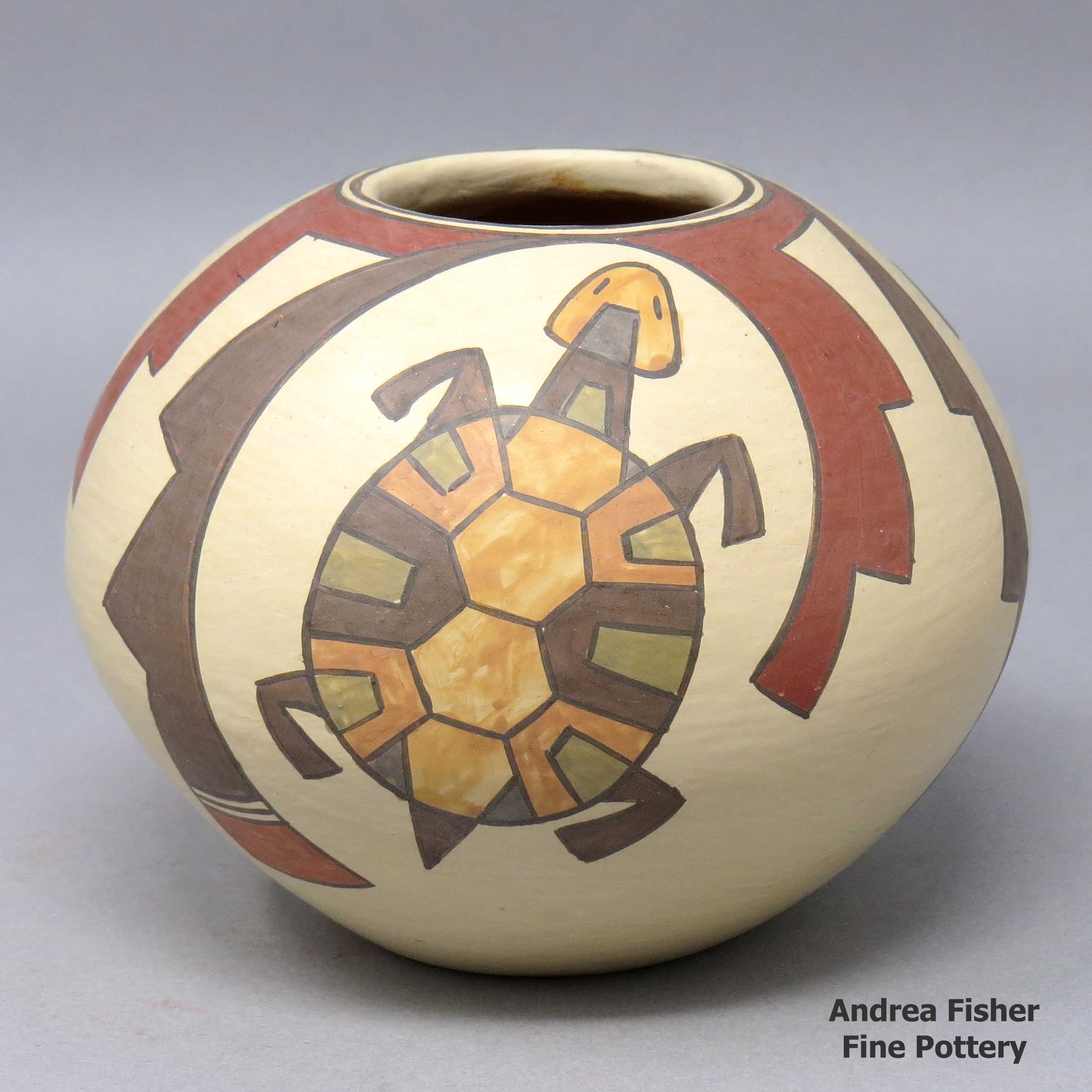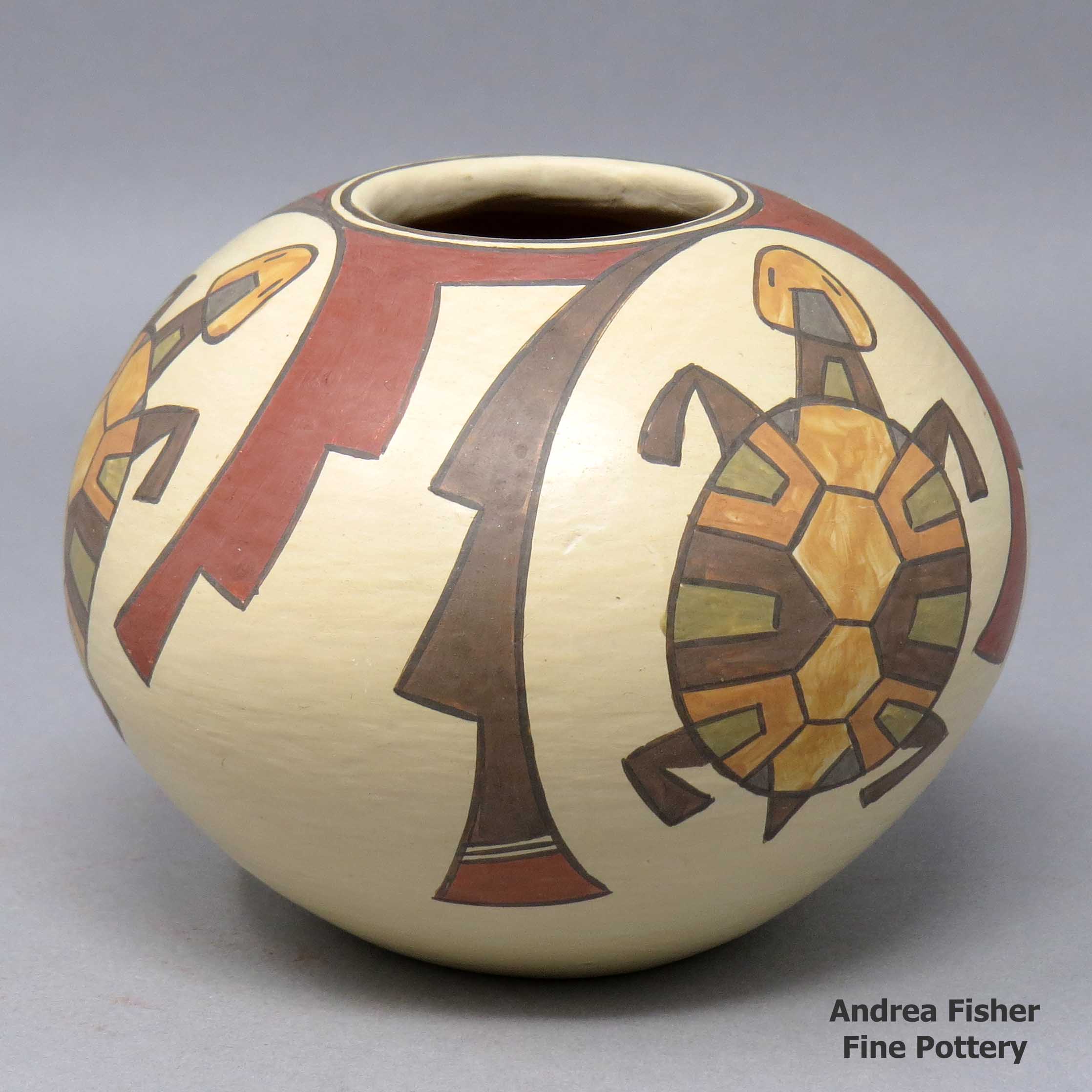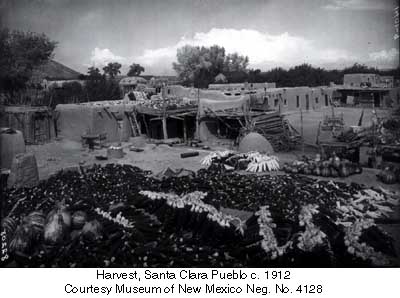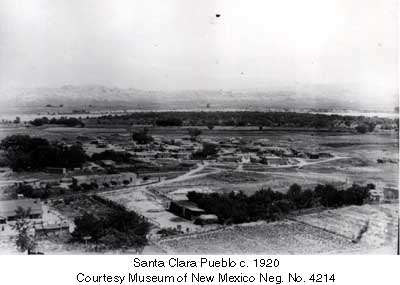| Dimensions | 3.75 × 3.75 × 3 in |
|---|---|
| Condition of Piece | Very good |
| Signature | -Lois- |
| Date Born | 2002 |
Lois Gutierrez, rwsc0k110: Polychrome jar with 3-panel turtle and geometric design
$375.00
A polychrome jar decorated with a 3-panel turtle and geometric design
In stock
- Product Info
- About the Artist
- Home Village
- Design Source
- About the Shape
- About the Design
- Family Tree
Brand
Gutierrez, Lois
Lois married Derek de la Cruz early in life and they've been working together since: Lois does most of the potting and painting while Derek works with the clay and helps with the firing. Lois and Derek are among the few potters still working at Santa Clara who are willing to search out and prepare the various colors of natural clay Lois uses on her pots.
One of their collaborations took the Best of Show ribbon at the Santa Fe Indian Market in 1982 and they were totally overwhelmed by the sudden increased demand for their pottery. They went to Santa Fe Indian Market a couple more times but chose more often to go to the New Mexico State Fair (and they've earned more than a few ribbons there, too).
Lois's specialty is painted polychrome pottery made the way it used to be at Santa Clara, before the carving and sgraffito processes took hold. Her designs are often depictions of scenes from pueblo life, adorned with appropriate traditional Santa Clara geometrics.
Some Exhibits that featured works by Lois and Derek
- Artistic Excellence: The Heard Museum Guild Indian Fair & Market Celebrates 60 Years. Heard Museum. Phoenix, Arizona. February 2, 2018 - August 31, 2018
- Images, Artists, Styles: Recent Acquisitions from the Heard Museum Collection. Heard Museum North. Scottsdale, Arizona. July 2001 - July 2002
- 1980 Heard Museum Guild Indian Arts and Crafts Exhibit. Heard Museum. Phoenix, Arizona. November 26 - December 3, 1980 Rising Stars. Gallery 10. Scottsdale, Arizona. February 8-27, 1980
- 1978 Heard Museum Guild Indian Arts and Crafts Exhibit. Heard Museum. Phoenix, Arizona. November 24 - December 2, 1978
- 1977 Heard Museum Guild Indian Arts and Crafts Exhibit. Heard Museum. Phoenix, Arizona. November 25 - December 3, 1977
- 1976 Heard Museum Guild Indian Arts and Crafts Exhibit. Heard Museum. Phoenix, Arizona. November 26 - December 5, 1976
Some Awards earned by Lois and Derek
- 1984 Santa Fe Indian Market, Classification II - Pottery, Division E - Traditional pottery, painted designs on burnished black or red surface, Category 1102 - Jars (over 8 inches tall): Second Place
- 1983 Santa Fe Indian Market, Katherine and Miguel Otero Award - Creative excellence in any category
- 1983 Santa Fe Indian Market, Classification II - Pottery, Division F - Traditional, painted designs on matte or semi-matte surface: Second Place
- 1982 Santa Fe Indian Market. Best of Show
- 1982 Santa Fe Indian Market, Best of Class - Pottery
- 1982 Santa Fe Indian Market, Classification Pottery, Best of Division
- 1982 Santa Fe Indian Market, Classification Pottery, Traditional Hopi, Zia, Acoma Style Pottery. Jars - Other Pueblos: First Place
- 1980 Heard Museum Guild Indian Arts and Crafts Exhibit, Classification VII, Pottery, Division A - Traditional construction and firing: Honorable Mention. Awarded for artwork: Large vase with fluted rim
- 1978 Heard Museum Guild Indian Arts and Crafts Exhibit, Best of Show. Awarded for polychrome bowl: "Hunter & Turkey"
- 1978 Heard Museum Guild Indian Arts and Crafts Exhibit: Heard Museum Board of Trustees Best of Crafts. Awarded for polychrome bowl: "Hunter & Turkey"
- 1978 Heard Museum Guild Indian Arts and Crafts Exhibit, Best of Pottery. Awarded for polychrome bowl: "Hunter & Turkey"
- 1978 Heard Museum Guild Indian Arts and Crafts Exhibit, Best of New Mexico Pueblo Pottery. Awarded for polychrome bowl: "Hunter & Turkey"
- 1978 Heard Museum Guild Indian Arts and Crafts Exhibit, Classification VII - Pottery, Division B - Contemporary: First Place. Awarded for polychrome bowl: "Hunter & Turkey"
- 1977 Heard Museum Guild Indian Arts and Crafts Exhibit, Classification VII - Pottery, Division B - Contemporary: Second Place. Awarded for artwork polychrome bowl
- 1976 Heard Museum Guild Indian Arts and Crafts Exhibit, Classification X - Pottery, Division B - Contemporary: Honorable Mention. Awarded for artwork: White bowl with rain dance design
A Short History of Santa Clara Pueblo

Santa Clara Pueblo straddles the Rio Grande about 25 miles north of Santa Fe. Of all the pueblos, Santa Clara has the largest number of potters.
The ancestral roots of the Santa Clara people have been traced to ancient pueblos in the Mesa Verde region in southwestern Colorado. When the weather in that area began to get dry between about 1100 and 1300 CE, some of the people migrated to the Chama River Valley and constructed Poshuouinge (about 3 miles south of what is now Abiquiu on the edge of the mesa above the Chama River). Eventually reaching two and three stories high with up to 700 rooms on the ground floor, Poshuouinge was inhabited from about 1375 CE to about 1475 CE.
Drought then again forced the people to move. One group of the people went to the area of Puyé (along Santa Clara Canyon, cut into the eastern slopes of the Pajarito Plateau of the Jemez Mountains). Another group went south of there to what we now call Tsankawi. A third group went a bit to the north, following the Rio Chama down to where it met the Rio Grande and founded Ohkay Owingeh on the northwest side of that confluence.
Beginning around 1580, another drought forced the residents of the Puyé area to relocate closer to the Rio Grande. There, near the point where Santa Clara Creek merged into the Rio Grande, they founded what we now know as Santa Clara Pueblo. Ohkay Owingeh was to the north on the other side of the Rio Chama. That same dry spell forced the people down the hill from Tsankawi to the Rio Grande where they founded San Ildefonso Pueblo to the south of Santa Clara, on the other side of Black Mesa.
In 1598 Spanish colonists from nearby Yunqué (the seat of Spanish government near the renamed "San Juan de los Caballeros" Pueblo) brought the first missionaries to Santa Clara. That led to the first mission church being built around 1622. However, the Santa Clarans chafed under the weight of Spanish rule like the other pueblos did and were in the forefront of the Pueblo Revolt of 1680. One pueblo resident, a mixed black and Tewa man named Domingo Naranjo, was one of the rebellion's ringleaders.
When Don Diego de Vargas came back to the area in 1694, he found most of the Santa Clarans were set up on top of nearby Black Mesa (with the people of San Ildefonso, Pojoaque, Tesuque and Nambé). An extended siege didn't subdue them but eventually, the two sides negotiated a treaty and the people returned to their pueblos. However, successive invasions and occupations by northern Europeans took their toll on the pueblos over the next 250 years. The Spanish flu pandemic in 1918 almost wiped them out.
Today, Santa Clara Pueblo is home to as many as 2,600 people and they comprise probably the largest per capita number of artists of any North American tribe (estimates of the number of potters run as high as 1-in-4 residents).
For more info:Pueblos of the Rio Grande, Daniel Gibson, ISBN-13:978-1-887896-26-9, Rio Nuevo Publishers, 2001
Upper photo courtesy of Einar Kvaran, Creative Commons Attribution-Share Alike 3.0 Unported License
Tewa Design Sources
The Northern Tewa people are mostly from the villages of Ohkay Owingeh, Santa Clara, San Ildefonso, Pojoaque, Nambé and Tesuque. The Hopi-Tewa of Arizona are descendants of the Southern Tewa. The Tewa share a common heritage from back in the 1200s CE, when their ancestors lived in the canyons and valleys west of Mesa Verde. When the Great Drought hit (around 1276 CE), they were already on the move because of other recent bad weather events. The kachina cult was developing around the same time and however it worked out, never took hold among the Tewa. The Tewas did incorporate the Medicine and Sacred Clown societies into their religious activities. Archaeologists have traced their tracks east from the Four Corners to the South San Juan Mountains, where they turned south and first built homes in New Mexico around Ojo Caliente. From there, they spread further south into the valley of the Rio Chama and then spread out there for a hundred years.
As more and more Dineh and Apaches came into the area in the 1400s, the Tewa moved downstream along the Chama. Some of them moved up onto the Pajarito Plateau while others sorted out into small villages on the east side of the Rio Grande. Shortly some of them came to the southern edge of the Santa Fe River Basin and found the Galisteo Creek Basin on the other side populated by Eastern Keres people. It was the same when they came to the mouth of the Santa Fe River at the Rio Grande: further south along the river was populated by other Eastern Keres people. And just upstream across the Rio Grande was the outlet of Frijoles Canyon, home of many Eastern Keres people in the 1400s and 1500s.
There were indigenous Tanoan people already living throughout the Rio Grande area and the two groups merged reasonably well. Somewhere in this time period, sodalities came into being: the Summer People and the Winter People. Some archaeologists believe the incoming Tewa became the Summer People and the Tanoans became the Winter People, based on the fact the incoming Tewas brought new seeds, new agricultural and ceramic technology, new dances and new religion. When the Spanish first arrived in the area around 1540 CE, the Tewa Basin was well occupied by the merged Tewa/Tano people. Those Tanoans who preferred not to merge built separate pueblos for themselves in more marginal areas in the Santa Fe and Galisteo River basins. Depopulation began after the Spanish left and didn't take their various diseases with them. It was after Don Diego de Vargas arrived in 1598 that the survivors were separated into their separate villages and restricted to those.
The Northern Tewa
The Northern Tewa design pallette contains a number of motifs common to many puebloan societies: hummingbirds, turtles, tadpoles, quails, owls, deer, hands, hoof prints, bird tracks and more. It's easy to see how many evolved from designs from the Flower World Complex of central Mexico. The Santa Clara and Nambé avanyu is a winding serpent with usually, one or three feathers on the top of its head. The San Ildefonso avanyu usually has a three- or five-pronged plume on its head. The avanyu itself is evolved from images of Quetzalcoatl. While the avanyu is the protective spirit of water and springs it also represents what happens when there's a heavy rain in the desert: flash floods that can wipe out whole villages.
Most San Ildefonso potters paint their decorations, only a few work with sgraffito decorations and a few work with inlaid stones and heishi beads. At Santa Clara, potters carve, scratch and paint their pieces, then sometimes reheat them with a blowtorch and mount stones on them... almost anything goes. The design palette is traditional to trend-setting contemporary, although the subject matter is usually the avanyu, or hummingbirds, turtles, quails, fish, deer, bear paws and bear claws, etc.
Because they had easy access to micaceous clay, the people of Nambé and Ohkay Owingeh built a brisk business in making micaceous pots and cookware, similarly to the people of Taos and Picuris at the time. More recently, Lonnie Vigil and Robert Vigil have produced micaceous pottery at Nambé while Clarence Cruz has been producing micaceous cookware and utensils at Ohkay Owingeh.
The people of Ohkay Owingeh decided to start over after essentially losing their pottery tradition in the 1800s. They never stopped making utilitarian pottery but even that declined in the late 1800s. In the 1920s, when it was decided they would work to revive a purely Ohkay Owingeh tradition, they settled on the designs found on some prehistoric pottery that had been found while digging in an old Tewa pueblo on Ohkay Owingeh land. The pottery was dated to the few decades before the Spanish arrived, hence: pre-contact and innocent of European influence. Their definition of Potsuwi'i pottery is very specific as to the colors and textures of the clay used and the designs carved, scratched or painted on them. Many of the design patterns are reflective of rock art from a thousand years ago.
The Southern Tewa
The Santa Fe Basin is where the Southern Tewa settled. They seem to have followed the idea that "further south is a better life," and they kept going south until they came up against other relatively entrenched people (migrants spreading out from Santo Domingo into the Galisteo Creek Basin). The Santa Fe Basin showed signs of having been occupied by the Tanoan people off-and-on over the centuries. It was a marginal landscape for farming but it was up against the Cerrillos Hills where they found turquoise, silver and lead ore. The turquoise trade was very profitable for some but the lead ore made possible different design techniques to use on fired pottery. The potters of the village did well producing lead-glazed pottery (not sealed, glazed only where the lead paint was applied and then ran in the heat of the fire).
In 1692, when the Spanish arrived in full force to reconquer northern New Mexico, most of the Tewa people in Tewa Basin gathered atop Black Mesa, a volcanic plug that sits between Santa Clara and San Ildefonso Pueblos. They stayed up there for months, almost impervious to Spanish attack. Eventually, though, they made a deal with the Spanish and returned to their various pueblos.
Shortly after that, the Spanish issued an order limiting access to the lead mines at the Cerrillos Hills to Spanish citizens only and, with that, the Southern Tewa lost their last possibility for remaining in a parched landscape. Because of the boundaries imposed by the Spanish, they all ran north in the night to the area of Chimayo. That didn't work out quickly, so they moved to the area of Santa Clara, again during the night. That didn't work out either as they were challenged by a Spanish priest and they killed him. From there they moved quickly to the area of Zuni, then up to First Mesa where they made a deal with the people of Walpi and were shortly living in their own village near the base of First Mesa. Over the centuries they came to be known as the Hopi-Tewa. In that same time period many of the religious aspects of Hopi society have made their way into Hopi-Tewa society. The Hopi-Tewa design pallette consists mostly of designs revived from potsherds found around the ancient pueblos of Awatovi, Sikyátki, Payupki and Kawaika'a, all of which are in the vicinity of the Hopi mesas.
About Jars
The jar is a basic utilitarian shape, a container generally for cooking food, storing grain or for carrying and storing water. The jar's outer surface is a canvas where potters have been expressing their religious visions and stories for centuries.
In Sinagua pueblos (in northern Arizona), the people made very large jars and buried them up to their openings in the floors of the hidden-most rooms in their pueblo. They kept those jars filled with water but also kept smaller jars of meat and other perishables inside those jars in the water. It's a form of refrigeration still in use among indigenous people around the world.
Where bowls tend to be low, wide and with large openings, jars tend to be more globular: taller, less wide and with smaller openings.
For a potter looking at decorating her piece, bowls are often decorated inside and out while most jars are decorated only on the outside. Jars have a natural continuity to their design surface where bowls have a natural break at the rim, effectively yielding two design surfaces on which separate or complimentary stories can be told.
Before the mid-1800s, storage jars tended to be quite large. Cooking jars and water jars varied in size depending on how many people they were designed to serve. Then came American traders with enameled metal cookware, ceramic dishes and metal eating utensils...Some pueblos embraced those traders immediately while others took several generations to let them and their innovations in. Either way, opening those doors led to the virtual collapse of utilitarian pottery-making in most pueblos by the early 1900s.
In the 1920s there was a marked shift away from the machinations of individual traders and more toward marketing Native American pottery as an artform. Maria Martinez was becoming known through her exhibitions at various major industrial fairs around the country and Nampeyo of Hano was demonstrating her art for the Fred Harvey Company at the Grand Canyon. The first few years of the Santa Fe Indian Market helped to solidify that movement and propel it forward. It took another couple generations of artists to open other venues for their art across the country and turn Native American art into the phenomenon it has become.
Today's jars are artwork, not at all for utilitarian purposes, and their shapes, sizes and decorations have evolved to reflect that shift.
About Geometric Designs
"Geometric design" is a catch-all term. Yes, we use it to denote some kind of geometric design but that can include everything from symbols, icons and designs from ancient rock art to lace and calico patterns imported by early European pioneers to geometric patterns from digital computer art. In some pueblos, the symbols and patterns denoting mountains, forest, wildlife, birds and other elements sometimes look more like computer art that has little-to-no resemblance to what we have been told they symbolize. Some are built-up layers of patterns, too, each with its own meaning.
"Checkerboard" is a geometric design but a simple black-and-white checkerboard can be interpreted as clouds or stars in the sky, a stormy night, falling rain or snow, corn in the field, kernels of corn on the cob and a host of other things. It all depends on the context it is used in, and it can have several meanings in that context at the same time. Depending on how the colored squares are filled in, various basket weave patterns can easily be made, too.
"Cuadrillos" is a term from Mata Ortiz. It denotes a checkerboard-like design using tiny squares filled in with paints to construct larger patterns.
"Kiva step" is a stepped geometric design pattern denoting a path into the spiritual dimension of the kiva. "Spiral mesa" is a similar pattern, although easily interpreted with other meanings, too. The Dineh have a similar "cloud terrace" pattern.
That said, "geometric designs" proliferated on Puebloan pottery after the Spanish, Mexican and American settlers arrived with their European-made (or influenced) fabrics and ceramics. The newcomers' dinner dishes and printed fabrics contributed much material to the pueblo potters design palette, so much and for so long that many of those imported designs and patterns are considered "traditional" now.
Pasqualita Tani Gutierrez Family Tree - Santa Clara Pueblo
Disclaimer: This "family tree" is a best effort on our part to determine who the potters are in this family and arrange them in a generational order. The general information available is questionable so we have tried to show each of these diagrams to living members of each family to get their input and approval, too. This diagram is subject to change should we get better info.
Pasqualita Tani Gutierrez was the younger sister of Sarafina Tafoya. Their mother died shortly after Pasqualita was born and she grew up in Sarafina's home, alongside nieces Christina Naranjo, Margaret Tafoya and Dolorita Padilla, and nephew Camilio Tafoya.
- Pasqualita Tani Gutierrez Tafoya (1883-) & Severiano Tafoya
- Petra Montoya (Pojoaque, 1907-1992) & Juan Isidro Gutierrez (Santa Clara, 1901-1977)
- Gloria Goldenrod Garcia & John Garcia
- Desiderio Star Gutierrez & Genevieve Tafoya
- Debra Duwyenie & Preston Duwyenie (Hopi)
- Judy & Andrew Harvier
- Lois Gutierrez (1948-) & Derek de la Cruz
- Juan de la Cruz
- Thelma (1946-) & Joe Talachy (1940-)(San Juan/Ohkay Owingeh)
- Maria Minnie Vigil (1931-)
- Virginia Gutierrez (daughter-in-law of Petra, Nambe/Pojoaque)
- Gloria Goldenrod Garcia & John Garcia
- Tomacita Gutierrez Tafoya (1896-1977) & Cruz Tafoya (1889-1938)
- Cresencia Tafoya (1918-1999)
- Annie Baca (1941-)
- Pauline Martinez (1950-) & George Martinez (San Ildefonso) (1943-)
- Harriet Tafoya (1949-) & Elmer Red Starr (Sioux) (1937-)
- Ivan Red Starr (1969-1991)
- Norman Red Star (nephew) (1955-)
- Cresencia Tafoya (1918-1999)
- Maria Barbarita Naranjo & Jose Dolores Naranjo
- Mary Scarborough
- Veronica Naranjo
- Celestina Naranjo & Salvador Naranjo









